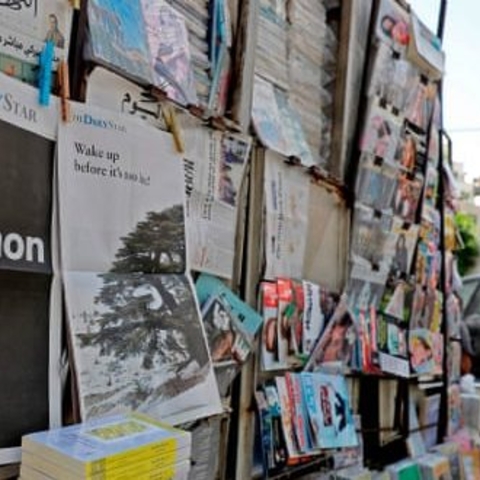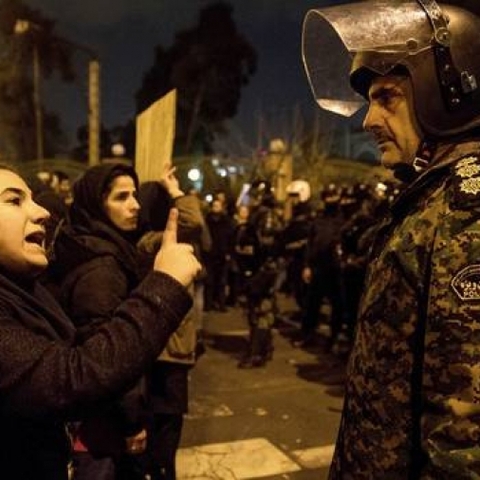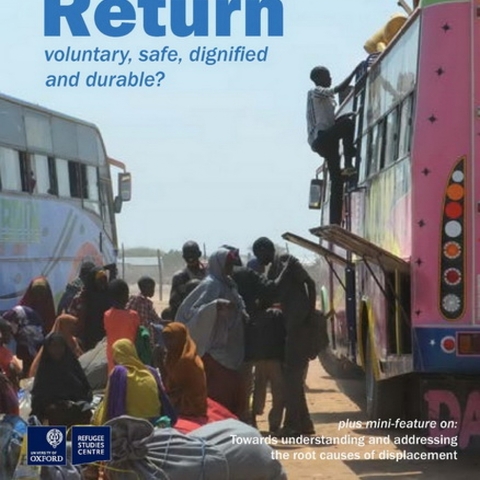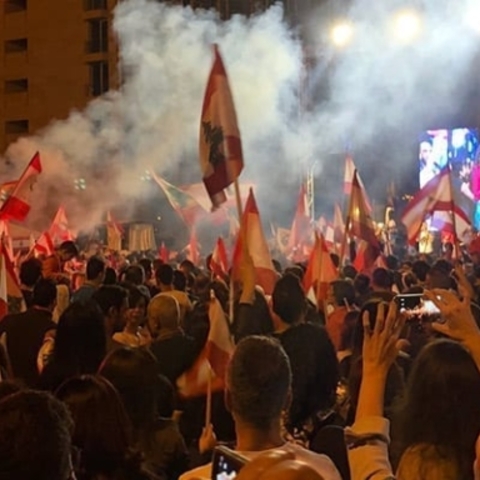Disarming the Palestinian Camps in Lebanon: A Complex Gamble
While the Lebanese authorities seek to gather weapons under state control, disarming non-state actors in Lebanon is not an easy task. This includes Hezbollah as well as the Palestinians factions. The Palestinian camps, where weapons are present, will be a testing ground.
The Palestinian presence in Lebanon is shaped by decades of displacement, political violence, and marginalization. Around 222,000 refugees live in Lebanon. 45 % of them reside in the 12 camps stretching from the southern border near Israel to the northern outskirts of Tripoli. These camps, some established as early as 1948 after the Nakba, the so-called ‘catastrophe’ that displaced around 700,000 Palestinians in the context of the establishment of Israel, are more than just homes—they are symbols of Palestinian resilience and also flashpoints of chronic instability.
For Palestinians, these camps are long-term sanctuaries shaped by a strong sense of community and shared history. For many Lebanese, however, they are seen as lawless zones where national authority holds little sway. Among the camps, Ain el Helwe near Saida stands out as a hotbed of factional conflict and armed activity. It resembles a fortress, surrounded by barbed wire and guarded towers, factions ranging from the PLO to Hamas and Islamic Jihad
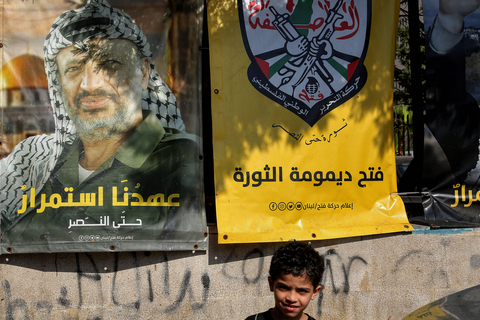
IMAGO / ZUMA Press Wire
A Legacy of Violence and Marginalization
Palestinian refugees in Lebanon are denied citizenship and barred from numerous professions. Their civil and economic rights remain limited. Historically, their involvement in the Lebanese Civil War (1975–1990), particularly through the Palestine Liberation Organization’s (PLO) military activities, deepened divisions in Lebanese society. Christian factions opposed the Palestinian armed presence, while leftist groups largely supported it. The civil war years saw horrific violence against Palestinians, including the camps wars in the 1980s and the 1982 Sabra and Shatila massacre.
When the Lebanese civil war came to an end, almost all militant groups were subjected to a disarmament process, including the Palestinian factions. However, weapons remained in the camps, as in many Lebanese homes, with Palestinians citing the need for protection after past massacres. In 2007, a PLO representative offered an official apology to the Lebanese for having misused Lebanon as a battleground for the attempt to liberate Palestine from the Israeli presence. Still, most Palestinian camps remained inaccessible to Lebanese security, with small arms and light weapons present. The only exception is Nahr el Bared, which was widely destroyed by the Lebanese Army in 2007, trying to eliminate violent insurgents from the extremist group Fatah al Islam. 1
The camp where most inner-Palestinian conflicts have been taking place is Ain el Helwe, the biggest refugee camp in Lebanon. Barbed wire around the camp and watch towers make the camp look like a vast prison from the outside. The camp, located near Saida, has been home to numerous Palestinian factions, ranging from PLO to Islamic Jihad to Hamas and other lesser-known groups, some of them extremist and violent to date. The inhabitants of the camp, as well as adjacent communities, have often suffered from very violent infighting between the different Palestinian factions.
Disarmament? Abbas, Gaza, and Strategic Calculations
During a recent state visit of Palestinian President Mahmoud Abbas to Lebanon, the disarmament of the Palestinian camps was on the agenda. What would Mahmoud Abbas gain from disarming the Palestinian camps? And why now?
Abbas’ state visit comes at a time of great turmoil in the Middle East: with Gaza being almost totally destroyed, and the two major militant groups that claim to defend the Palestinian cause – Hamas and Hezbollah - being significantly weakened, there is no real political or military balance between the Israeli authorities and their Western allies on one hand, and the Palestinians with their supporters on the other hand. Hezbollah lost the war against Israel, and the new government in Lebanon seeks to concentrate the security sector under state authority solely, thus doing everything it can to finally terminate military adventures by non-state actors such as Hezbollah and Hamas once and for all. The Lebanese Army deployed to the Southern border with Israel and has been dismantling military infrastructure by Hezbollah in the South and elsewhere. Since Hamas has been operating out of Lebanon alongside Hezbollah, even though it was not very powerful or significant and possesses few heavy weapons, it still poses a threat to Lebanon’s internal and external security. It has, therefore, been at the center of attention of Lebanese authorities.
Abbas’s push for disarmament of the Palestinian camps is not totally new – in a previous state visit in 2011, the political process of disarming the Palestinian camps had been initiated back then. In the wake of 7 October 2023, the presence of weapons in the camps has done little to nothing to influence the outcome of the war led in Gaza. Rather, these arms have primarily fueled intra-Palestinian strife, especially in camps like Ain el Helwe.
Instead, Abbas sees disarmament as a political opportunity. The Palestinian Authority (PA), which he heads, is the dominating political force in the Lebanon camps, but Hamas and Islamic Jihad are also influential. By backing disarmament, Abbas aims to weaken these rivals and reassert the PA’s legitimacy as the sole representative of Palestinians—whether in Gaza, the West Bank, or the diaspora. This could strengthen the PA’s hand in future negotiations with Israel.
The Dialogue Committee and Its Limits
In this context, a “Dialogue Committee” has been formed between the PA and Lebanese security forces. This body is tasked with overseeing the disarmament process and facilitating communication between camp residents and the state. Notably, the committee excludes Hamas and other militant factions—the very groups expected to disarm.
This exclusion signals the limits of the process. Disarming PA-aligned camps might be achievable and could be promoted to the West as a security success. However, camps with a strong presence of Hamas, the Islamic Jihad, and other militant groups present a much greater challenge. Without incentives such as expanded work rights, property ownership, or even a path to citizenship, it is unlikely these factions will surrender their weapons voluntarily. Simultaneously, UNRWA is seeking to distinguish between the two matters, as it holds the view that Hamas is unlikely to relinquish its weapons, thereby jeopardizing the legitimate claims to employment and property rights.
The disarmament process is set to start on 15 June 2025 and will target the Palestinian camps in Beirut and its suburbs first. The camps located in Beirut, namely Sabra and Shatila, Mar Elias, and Bourj el Barajne, are mainly controlled by the PA, and the presence of weapons is not as significant as in camps further South, especially Ain El Helwe. Therefore, the first phase will tackle the camps seen as less problematic. The second phase will address the camps in the Bekaa Valley and Beddawi camp in the North. The most difficult phase will be the third phase, as it involves the largest refugee camp near Saida, Ain el Helwe. The problem is that negotiations with militant groups have not begun. In volatile areas like Ain el Helwe, any attempt by the Lebanese Army to enter the camp and seize weapons could provoke fierce resistance, risking broader conflict.
Moreover, one of the core concerns for Palestinians in Lebanon is security. If they give up their arms, who will defend them? Many recall the horrific massacres of the civil war and remain skeptical that the Lebanese Army or police would offer protection in times of crisis. A more recent worry is the threat of Israeli drone strikes. Would the Lebanese state risk retaliation from Israel by shielding the camps? The trauma of past violence and the uncertainty of future protection make disarmament a deeply existential question for many Palestinians.
Hezbollah’s Shadow and the Regional Context
Up to date, the two parties that supported militant Palestinian actions against Israel, Amal, and Hezbollah, have not voiced either or support nor discontent for a potential disarmament process of the Palestinian camps, and their position could be crucial in making the disarmament a success or a failure. At the same time, in case Amal and Hezbollah agree to the disarmament process in the Palestinian camps, it can be seen as an indicator that Hezbollah itself will be the next entity to be disarmed. In this sense, the disarmament process of the Palestinian camps is a trial-and-error game of the Lebanese authorities. It signals to Western countries that Lebanon is trying to do its duty of disarming non-state actors, and disarmament of the Palestinian camps seems somewhat feasible, at least partially. Once this is done, the much bigger challenge lies ahead – disarming Hezbollah and this depends on a yet bigger question, the negotiations between the United States and Iran.
- 1
“Fatah al-Islam is a Salafi-jihadist offshoot of Fatah which first appeared in the north Lebanese
Palestinian refugee camp of Nahr al-Bared in 2006. The Lebanese government has linked the group to
Syrian intelligence.”
